The hidden cost of not knowing: Unlocking enterprise knowledge in the age of AI
In today’s relentlessly competitive business landscape, agility and informed decision-making are paramount. The ability to swiftly access and leverage an organization’s collective intelligence can be the critical differentiator between thriving and merely surviving. Yet, beneath the surface of many enterprises lies a significant, often underestimated drain on productivity and innovation: the pervasive challenge of fragmented and inaccessible knowledge.
The Knowledge Conundrum: A Daily Reality
Do these scenarios resonate?
- A marketing manager needs crucial data from a past campaign to inform a new strategy, but the insights are buried in a former colleague’s archived emails and scattered reports on a shared drive.
- A sales team member preparing a critical client pitch knows a similar deal was closed successfully last year, but the specifics – the winning arguments, the key stakeholders, the potential pitfalls – remain elusive, locked away in disparate documents and undocumented conversations.
- An R&D team embarks on a new project, unaware that a similar initiative, with valuable lessons learned, was undertaken years ago by a different department.
These aren’t isolated incidents; they are the daily realities within organizations where intellectual capital remains siloed and difficult to harness.
Consider the tangible costs:
- Lost Productivity: Imagine the cumulative hours wasted each week as employees hunt for information, re-do work already completed, or wait for colleagues to manually provide data.
- Slower Sales Cycles: When sales teams lack quick access to case studies, product specifications, or competitive intelligence, closing deals takes longer and win rates can suffer.
- Duplicated Efforts: Teams unknowingly tackling the same problems or researching the same topics lead to wasted resources and missed opportunities for synergy.
- Missed Opportunities: The inability to connect disparate pieces of information can prevent the emergence of crucial insights, hindering innovation and strategic foresight.
- Increased Risk: Relying on outdated or incomplete information due to a lack of traceability can lead to costly errors and flawed decision-making.
The truth is, in an era where data is hailed as the new oil, many organizations are sitting on a vast, untapped reservoir of knowledge, struggling with outdated tools and fragmented systems that prevent them from fully capitalizing on their intellectual assets. The cost of not knowing is no longer just an inconvenience; it’s a significant impediment to growth and a vulnerability in an increasingly competitive world.
Enterprise have yet to successfully solve the knowledge problem
Method 1: Use Various Systems For Knowledge Management
For years, organizations have grappled with the challenge of harnessing their collective wisdom, implementing various strategies and tools with the aim of making knowledge accessible and actionable. These efforts, while driven by a clear need, often fall short in today’s dynamic business environment, highlighting the limitations of pre-AI approaches to knowledge management. The sheer complexity of managing information across multiple platforms is starkly illustrated by a recent report from CAKE.com in April 2025,indicating that 54% of organizations utilize more than five different systems for documenting and sharing knowledge. This fragmentation directly contributes to significant productivity losses, with studies estimating that employees spend a considerable amount of their workday searching for information – with McKinsey reporting this to be as high as 1.8 hours per day.
Method 2: Centralized Document Repositories With Manual Maintenance
One of the most common strategies involves the establishment of centralized document repositories. Intranets, shared network drives like OneDrive and Google Drive, and more sophisticated document management systems have long been the cornerstone of this approach. The promise is a single source of truth, a digital library where employees can find the information they need. However, the reality often diverges significantly from this ideal. The sheer volume of documents, coupled with rudimentary search functionalities, frequently leads to frustration. Imagine an employee searching for “best practices in customer onboarding.” They might be met with a deluge of vaguely related documents – old presentations, lengthy reports, and outdated guides – forcing them to embark on a time-consuming treasure hunt with no guarantee of finding the specific insight they require. Furthermore, despite the “centralized” label, information can easily become trapped within team-specific folders or individual accounts, recreating the very silos these systems were intended to break down. The administrative overhead of maintaining these repositories – ensuring consistent tagging, managing version control, and weeding out obsolete information – adds another layer of complexity, often leading to neglected and cluttered systems that further impede effective knowledge retrieval. Adding to this challenge, a significant portion of enterprise knowledge remains undocumented; Starmind reports that up to 80% of organizational knowledge is never captured, highlighting a massive reservoir of untapped insights.
Method 3: Collaboration Platforms
The rise of collaboration platforms like Slack and Microsoft Teams has undoubtedly revolutionized workplace communication. These tools facilitated crucial remote work during the COVID-19 pandemic, with Microsoft Teams reportedly seeing a dramatic surge in daily active users. Initially hailed as a solution for seamless communication and file sharing, the sheer volume of information exchanged on these platforms over time has ironically contributed to the knowledge management challenge. What began as a tool for instant connection has, for many teams, become a significant source of information overload, making it increasingly difficult to locate specific past discussions, shared files, or key decisions buried within countless channels and threads. The unstructured nature of this communication and the lack of consistent tagging make it incredibly difficult to integrate this wealth of information into a cohesive knowledge management strategy. This makes the vast amount of undocumented knowledge (as highlighted by Starmind) even harder to leverage within these platforms.
Method 4: Communities and Internal Forums
Efforts to foster communities of practice and internal forums represent another attempt to facilitate knowledge sharing. By bringing together employees with shared interests or expertise, these initiatives encourage peer-to-peer learning and the exchange of best practices. While valuable for those directly involved, the knowledge generated within these groups may not be easily discoverable or accessible to the wider organization. Furthermore, the success of these communities relies heavily on the active participation of individuals, which can be influenced by workload and personal priorities. Scaling the insights gained within these informal settings and tracking their impact across the entire enterprise remains a significant challenge. The inefficiency of finding information across fragmented systems underscores the limitations of relying solely on these community-driven efforts for organization-wide knowledge access. Adding to this, CAKE.com also reported in early April 2025 that 62% of agents say their help materials are not up-to-date, highlighting the challenge of maintaining knowledge relevance.
Method 5: Manual Knowledge Transfer
Finally, manual knowledge transfer through meetings, presentations, training sessions, and mentorship programs remains a fundamental, yet often inefficient, method. While crucial for onboarding and sharing specific expertise, these approaches are inherently time-consuming and lack scalability. Furthermore, the reliance on individual memory and documentation can lead to inconsistencies and the potential loss of valuable tacit knowledge when employees leave the organization. The consequences of poor knowledge management are substantial, with IDC estimating that Fortune 500 companies lose approximately $31.5 billion annually due to the failure to share necessary information. Moreover, the time wasted by employees searching for elusive knowledge contributes to a massive drain on productivity, costing the US economy an estimated $900 billion per year according to Basex.
In conclusion, while these traditional tools and strategies represent genuine attempts to address the knowledge challenge, they often fall prey to limitations in searchability, maintenance, scalability, and the ability to capture the nuances of organizational knowledge. The persistent struggle to connect employees with the information they need, when they need it, underscores the necessity for a more intelligent and integrated approach – one that can truly unlock the vast potential of an organization’s intellectual capital.
The solution: KNOW GPT – Your centralized intelligence Hub
Bridging the Gap: The KNOW Ecosystem as the Intelligent Solution
Recognizing the significant shortcomings of the traditional knowledge management approaches detailed earlier – the fragmented systems requiring users to navigate multiple platforms, the immense productivity drain from employees spending hours searching for information, the vast amount of undocumented knowledge, and the staggering financial losses incurred – a fundamentally more intelligent and integrated approach is clearly required.
The KNOW ecosystem provides precisely this: a practical, adaptable framework designed to overcome these persistent challenges. It moves beyond the limitations of simple search, static repositories, and overloaded collaboration platforms to transform your organization’s scattered documents and data into a strategic, instantly accessible asset. It’s designed to work within any company’s structure, turning internal knowledge into a driver for efficiency, innovation, and growth through four key stages that directly address the failures of past methods:
- Collect: Overcoming Barriers to Capture Collective Wisdom
A core failure of previous systems is the difficulty of contribution, leading to that vast reservoir of undocumented knowledge. Valuable insights often stay locked away simply because sharing is cumbersome. The Collect stage of the KNOW ecosystem removes these barriers, making it effortless to build the rich, reliable knowledge base that centralized repositories often failed to achieve effectively.
- Addressing Low Participation: Unlike the often-clunky interfaces of older systems, an intuitive browser extension lets employees contribute documents (reports, presentations, etc.) instantly, directly from their workflow. Value: This dramatically lowers the barrier to entry, encouraging widespread sharing and actively working to capture more of that 80% of undocumented collective wisdom with minimal effort.
- Preventing Future Chaos: Instead of relying on inconsistent manual tagging or facing the chaos of untagged documents found in shared drives, simple tagging (metadata like sector, project type) upon submission organizes information from the start. Value: This proactive structuring makes knowledge easily searchable and relevant later, saving countless hours otherwise lost in frustrating searches.
- Integrating, Not Fragmenting: Rather than adding another silo, the system stores document links and metadata centrally, using technology adaptable to your existing infrastructure (be it cloud platforms like BigQuery/Azure, Microsoft environments, or proprietary systems). Value: It integrates smoothly without forcing major tech overhauls, connecting information rather than further isolating it.
- Combating Outdated Information: Addressing the problem highlighted where a majority (62%) of help materials can be out-of-date, KNOW tackles this by linking to original files. Any updates automatically trigger re-indexing. Value: This ensures users consistently access the latest, most accurate information, unlike the static and often neglected content in traditional repositories.
In essence, the Collect stage focuses on building a comprehensive, well-organized, and consistently up-to-date knowledge foundation, directly countering the issues of poor capture, disorganization, and stale information that plagued earlier knowledge management attempts.
- Index: Transforming Raw Data into Truly Searchable Intelligence
As demonstrated by the frustrating experiences with basic search functions in intranets and shared drives, stored data is useless if it can’t be effectively found and understood. KNOW’s intelligent Index stage processes information deeply, moving far beyond simple keywords to make connections others miss.
- Automating Tedious Processes: Cloud-based functions handle document retrieval, standardization (e.g., to PDF for consistency), and secure storage automatically. Value: This frees up valuable employee time previously spent on manual processing and ensures consistent handling, unlike the often burdensome maintenance required for older systems.
- Unlocking Previously Hidden Knowledge: Traditional systems struggle with non-textual information. KNOW employs advanced analysis to extract text and, crucially, uses Generative AI to understand and summarize images and slides within documents like presentations. Value: This taps into valuable insights previously buried in visual content – a significant portion of enterprise knowledge often ignored by basic indexing – providing a more complete picture.
- Delivering Relevance, Not Noise: Moving beyond the limitations of rudimentary keyword search that often returns irrelevant results, KNOW utilizes a sophisticated blend of keyword and semantic search (hybrid search) combined with a proprietary scoring system. Value: This pinpoints the most relevant information with high accuracy and speed, directly reducing the frustrating searches and wasted time characteristic of older systems.
This Index stage transforms your collected raw information from a difficult-to-navigate mass into deeply understood, precisely searchable intelligence, overcoming the searchability limitations that were a major downfall of previous tools.
- Expose: Democratizing Access Beyond Silos with Conversational AI (KNOW GPT)
Even well-indexed knowledge provides limited value if accessing it remains difficult or confined to specific groups, a common issue with siloed repositories, specialized forums, or even overloaded collaboration platforms where information gets buried. True value comes when knowledge is easily accessible to everyone. The Expose stage, powered by KNOW GPT, provides an intuitive gateway that overcomes these barriers.
- Intuitive Interaction for All: Employees ask questions in plain language via a secure, internal chat interface, similar to popular AI tools they may already use. Value: This requires minimal training, promoting faster adoption across all departments and roles, unlike systems requiring specific search syntax or navigation skills.
- Answers, Not Just Document Links: Instead of simply returning a list of potentially relevant documents that the user still needs to sift through (a common outcome of repository searches), KNOW GPT reads the most relevant source documents and provides concise, synthesized answers, clearly citing the sources used. Value: This dramatically speeds up understanding and decision-making, while maintaining trust through verifiable origins – a stark contrast to the time-consuming “treasure hunt” often required previously.
- Breaking Down Information Silos: Complex information, regardless of its original format or location, becomes easily digestible for anyone needing it. This bridges the gaps often seen between departments or between experts in communities of practice and the wider organization. Value: This empowers employees across the board, enhances collaboration, and can accelerate critical processes like project delivery and sales cycles by making expertise readily available.
Through the Expose stage, KNOW GPT makes complex organizational knowledge instantly conversational, actionable, and universally available within a secure environment, directly addressing the access and usability issues inherent in fragmented or difficult-to-use traditional systems.
- Monitor: Ensuring Continuous Improvement and Demonstrable ROI
A final failing of many past knowledge initiatives was their tendency to become static – systems were implemented and then gradually neglected, becoming outdated or irrelevant without clear metrics for success or mechanisms for improvement. The KNOW ecosystem avoids this pitfall through a dedicated Monitor stage focused on ongoing optimization.
- Understanding Actual Use: Analytics reveal how the system is being used, which topics are popular, where searches succeed or fail, and potential knowledge gaps within the organization. Value: This provides concrete data to focus efforts on high-value knowledge areas and content needs, unlike the guesswork often involved in maintaining older systems.
- User-Centric Refinement: Incorporating feedback mechanisms allows users to directly contribute to improving search algorithms and chatbot responses. Value: This ensures the system remains relevant and becomes increasingly effective over time, adapting to user needs rather than becoming stagnant like the 62% of outdated materials reported in some surveys.
- Maximizing Performance and Value: Continuous monitoring and tuning keep the system fast, reliable, and delivering tangible benefits. Value: This protects the organization’s investment and ensures the KNOW ecosystem provides ongoing, measurable contributions to business goals, helping to mitigate the massive productivity costs (like the $900 billion estimated by Basex) associated with poor knowledge access.
The Monitor stage ensures the KNOW ecosystem remains a dynamic, evolving asset, continuously adapting to user needs and delivering measurable, long-term value, thereby providing a sustainable solution rather than another tool destined for obsolescence.
In conclusion, by systematically addressing the core weaknesses of traditional knowledge management – from initial capture through indexing, access, and ongoing refinement – the KNOW ecosystem offers an intelligent, integrated, and adaptable solution designed to finally unlock the true potential of an organization’s collective intelligence and overcome the costly inefficiencies of the past.
Results
- Provision of a search catalog available 24/7, updated in near-real time and accessible to all 1,700 Artefact employees worldwide.
- Around 100 distinct users every week, with an average total number of requests of 850 per week.
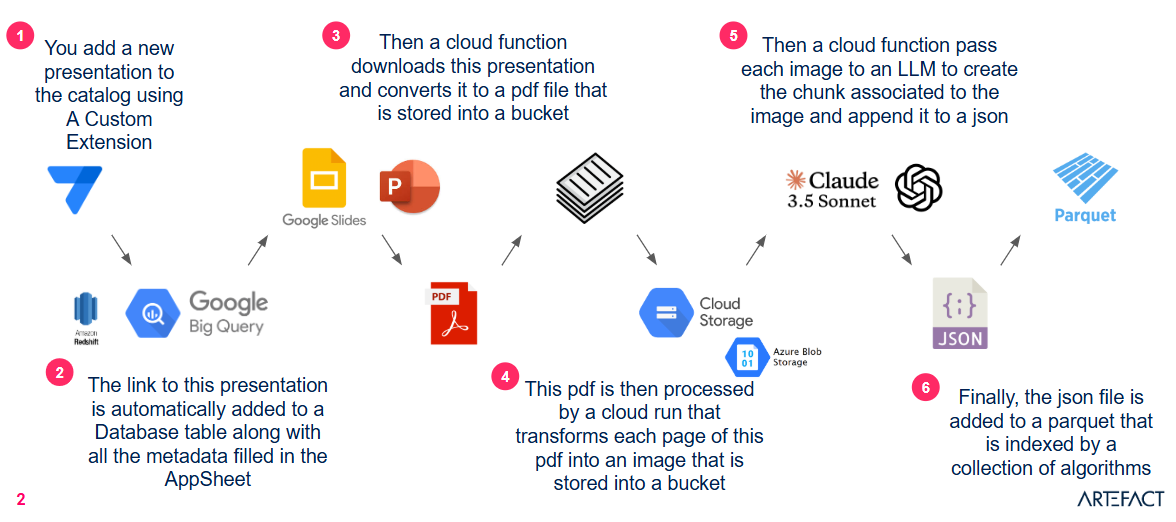
The strategic advantage of KnowGPT
Implementing KNOW GPT is not merely an IT upgrade; it represents a fundamental shift in how your organization leverages its most valuable asset: its collective intelligence. It’s a strategic investment that transcends traditional knowledge management, directly addressing core inefficiencies and unlocking new avenues for growth and innovation.
Imagine a workplace where the power of cutting-edge Generative AI is seamlessly integrated with the vast repository of your company’s accumulated wisdom. KNOW GPT makes this a reality. Beyond simple search and retrieval, it empowers your employees with the ability to generate new content, brainstorm solutions, and structure their thinking – all within a secure, proprietary environment. This unlocks a new level of individual productivity and fosters a culture of continuous creation and innovation.
The dedicated internal search agent within KNOW GPT acts as a laser focus for your enterprise knowledge. Instead of sifting through endless files, employees can quickly pinpoint the most relevant documents, such as crucial slides and past project materials, significantly accelerating decision-making. Need to understand how a similar challenge was tackled before? KNOW GPT provides rapid access to Artefact’s rich history of experience, allowing for faster, more informed strategic choices.
Furthermore, KNOW GPT goes beyond passively providing information; it actively empowers employees by enabling them to tailor the system to their specific needs. The creation of personalized agents for tasks like drafting communications or conducting specialized research demonstrates a level of adaptability that integrates AI directly into individual workflows, boosting efficiency and effectiveness.
The strategic advantage of KNOW GPT extends to mitigating critical risks. By being a proprietary tool, it eliminates the data security concerns associated with public AI models. Your sensitive company knowledge remains within your control, fostering trust and encouraging widespread adoption without the fear of data leakage. This secure environment allows for the uninhibited leveraging of AI’s power across the organization.
Moreover, KNOW GPT directly addresses the persistent challenge of knowledge retention. By seamlessly capturing employee-generated content within the integrated Google Drive ecosystem, valuable insights and experiences are preserved, reducing the risk of knowledge loss when employees transition. This creates a more resilient and continuously learning organization.
The widespread adoption within Artefact, with over 200 consultants using KNOW GPT daily, speaks volumes about its practical value and impact on efficiency. By providing a powerful, internal AI tool, companies can also realize significant cost savings compared to individual subscriptions to external GenAI platforms.
Ultimately, KNOW GPT is not just a tool; it’s a strategic enabler for organizational agility and digital transformation. By staying at the forefront of AI advancements and digitizing the wealth of experience and resources within the enterprise, KNOW GPT ensures that your organization is equipped to navigate the complexities of the modern business landscape and capitalize on emerging opportunities.
Stop searching, start knowing. It’s time to strategically invest in KNOW GPT and unlock the true, knowledge-powered potential residing within your enterprise.

 BLOG
BLOG


